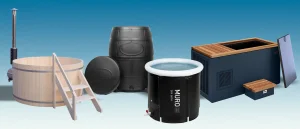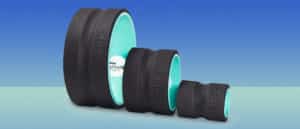The First OTC Continuous Glucose Monitor (CGM) Is Finally Here
- By Rebekah Harding
- March 12, 2024
C
ontinuous glucose monitor (CGM) use is surging in the U.S. among health optimizers looking to see how eating specific foods impacts their blood sugar. The devices, created for people with diabetes, have been heralded by longevity experts like Peter Attia, M.D., and David Sinclair, Ph.D., who recommend them for tracking insulin response. And soon, it will be even easier to snag one.
The United States Food and Drug Administration (FDA) just approved the Dexcom Stelo CGM for over-the-counter sale, which means you’ll soon be able to pick one up at your local drugstore. Here’s everything you need to know about the device before it hits a pharmacy near you.
What Is a Continuous Glucose Monitor (CGM)?
Continuous glucose monitors (CGMs) are small wearable sensors that monitor your blood sugar levels throughout the day. Seeing your glucose levels in real time can give you valuable information about how different foods impact your blood sugar. And foods impact everyone differently.
Attia points to research that suggests that there are several different “glucotypes,” or different responses to glucose in non-diabetic people (1). That means chowing down on a bowl of white rice could temporarily send your blood sugar sky high, while your dinner date may not experience any dramatic fluctuations in their levels.
A single device can be worn (typically on the upper arm) for up to two weeks at a time, depending on the model. The Dexcom Stelo CGM can be worn for 15 days before it needs to be replaced.
CGMs make daily testing easier for people with type 1 or type 2 diabetes, who previously had to grit through multiple sharp finger pricks a day to test their blood glucose levels (2).
Most private insurance plans and medicare cover CGMs for people with diabetes. But without insurance, most CGM devices—and their tracking apps—cost upwards of $150 a month. The FDA’s Director of the Center for Devices and Radiological Health Jeff Shuren, M.D., hopes that the new over-the-counter clearance will make CGMs more accessible and more affordable.
“Today’s clearance expands access to these devices by allowing individuals to purchase a CGM without the involvement of a health care provider,” Shuren said in a brief. “Giving more individuals valuable information about their health, regardless of their access to a doctor or health insurance, is an important step forward.”
About the Expert:
Blanca Garcia, R.D.N., is a registered dietitian and nutrition specialist at Health Canal.
CGMs for non-diabetics
The FDA brief also notes that people without diabetes—but who want to understand how their diet and exercise routine impacts their blood sugar—may also benefit from CGMs going OTC.
Attia calls insulin resistance one of the “four horsemen” of chronic disease. And he believes that monitoring your blood sugar levels with a CGM can help spot this condition before it takes a toll on your health.
“I think nearly every adult could benefit from [wearing a CGM], at least for a few weeks,” Attia writes in his book, Outlive.
While research on how CGMs impact people without diabetes is sparse, a 2020 study found that 87 percent of continuous glucose monitor users (who had diabetes) improved their diet based on readings from the device (3). But, CGMs may help promote similar lifestyle changes in people without diabetes—and perhaps even help flag prediabetes.
“Continuous Glucose Monitors would be ideal for a person with pre-diabetes,” says Blanca Garcia, R.D.N. “The person is at risk of developing diabetes if lifestyle changes are not made, and monitoring is one great way to identify what causes blood sugar spikes.”
A 2023 study used CGMs to spot impaired glucose homeostasis, which is a precursor to diabetes (4). They found that one in five healthy participants had a glucose metabolism (how effectively your body turns sugar into energy) that matched those with prediabetes.
How to Get a Dexcom Stelo CGM
According to a Tuesday brief from Dexcom, the Stelo CGM will be available to purchase at most drugstores some time this summer. The company hasn’t released pricing information for the device yet.
While you only have to buy the applicator device once, Dexcom’s current prescription CGM offering—the Dexcom G7—costs over $300 for a month’s supply of CGM sensors without insurance.
If you can’t wait for the Stelo to hit the shelves, check out our ranking of the best CGMs for non-diabetics.
References
1. Hall, et al (2018). Glucotypes reveal new patterns of glucose dysregulation.
2. Didyuk, et al (2021). Continuous Glucose Monitoring Devices: Past, Present, and Future Focus on the History and Evolution of Technological Innovation.
3. Ehrhardt, et al (2020). Continuous Glucose Monitoring As a Behavior Modification Tool.
4. Kaufman, et al (2023). Screening for Impaired Glucose Homeostasis: A Novel Metric of Glycemic Control.












